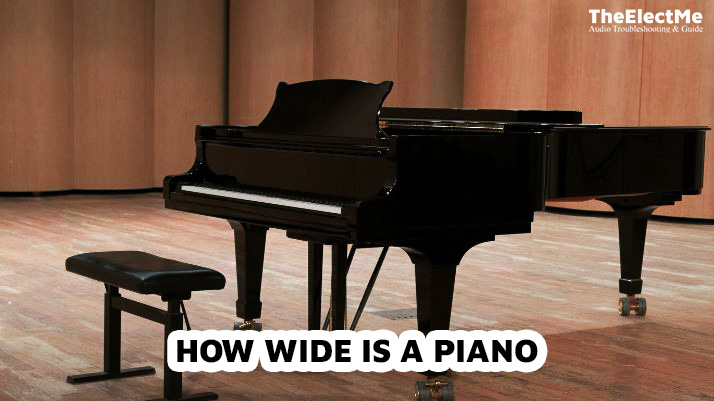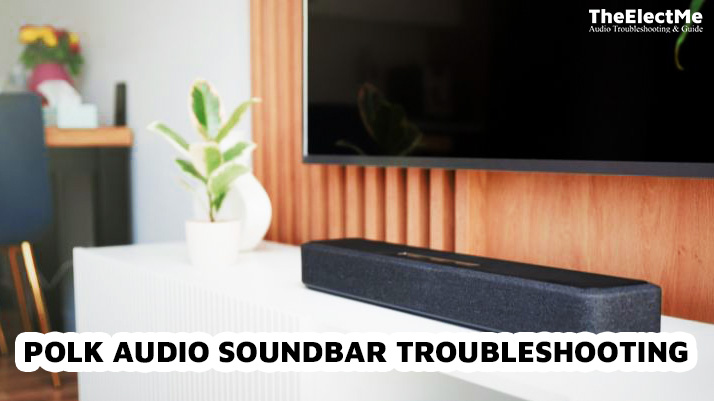How wide is a piano? Pianos come in various shapes and sizes, from petite spinets to large concert grands. The width of a piano can also vary depending on its brand, model, and type.
Generally, 58 inches is considered the standard width for a piano, but there are exceptions to this rule.

Read and learn more about this musical instrument. Let’s reveal this mystery.
What Is The Standard Width Of A Piano?
58 inches is the standard width for most pianos. 40 to 60 inches is the height of standard pianos. At the same time, the depth of a piano can range from 20 to 24 inches. However, this measurement is not set in stone and can vary depending on the brand and model of the piano.
Some high-end brands may have wider or narrower dimensions to accommodate their unique design and sound. This is why it’s important to always check the specific dimensions of a piano before making a purchase.
Aside from the brand and model, other factors can affect the width of a piano.
Let’s explore some of these factors in more detail.
How Wide Is A Piano? 4 Factors Affecting Piano Width
Regarding piano dimensions, the width is as important as the height and depth. Here are four factors that can affect the overall width of a piano:
1. Type of Piano
A piano is a musical instrument that has been around for centuries and comes in various types. Each type of piano has its unique characteristics, including the width. Let’s look at four common types of pianos and their respective widths.
a) Grand Piano
The grand piano is one of the most well-known and prestigious. It typically has a width of 5 feet. The larger the grand piano, the wider it will be. This type of piano is often used in concert halls and performance spaces due to its rich sound quality and impressive size.

b) Upright Piano
The upright piano is popular for home use, as it takes up less space than a grand piano. Its width is about 58 inches and it comes in various sizes ranging from spinet (the smallest) to studio and console pianos. Despite its smaller size, the upright piano still produces a full and rich sound.
c) Baby Grand Piano
As the name suggests, the baby grand piano is a smaller version of the grand piano. Its width ranges from 4 to 5 feet, making it slightly more compact than its larger counterpart. This type of piano is often favored by musicians with limited space but still want a high-quality instrument.
d) Digital Piano
With advancements in technology, digital pianos are becoming increasingly popular. They are a more modern and versatile option. They can mimic various piano sounds and have features like recording and different instrument options.
Digital piano’s width ranges from 1400mm [55-1/8”], making them much more compact than traditional pianos.
They are also typically lighter in weight, making them easier to move and transport. Additionally, digital pianos with accessories do not require tuning, saving the musician time and money.
2) Number of Keys
The number of keys on a piano refers to the number of white and black keys. It typically ranges from 88 keys for a full-sized piano to 61 or 76 for smaller keyboards. The more keys a piano has, the wider it will be.
Each key corresponds to a different note or pitch in the musical scale. As more notes are added, the piano size needs to increase to accommodate them all.
Additionally, the number of keys can also determine the type of piano. For example, most traditional pianos have 88 keys, while electronic keyboards often have fewer keys. The number of keys can also determine the range and versatility of a piano.
Pianos with more keys can play a wider range of music, including pieces that require lower or higher notes.
3) Design and Construction
The design and construction of a piano also play a crucial role in its width and size. Generally, a piano’s shape is based on its soundboard, amplifying the strings’ vibrations. The larger the soundboard, the more space it will take up and thus increase the overall width of the piano.
Other components, such as the frame, strings, and hammers, also contribute to a piano’s size.
Modern pianos have metal frames instead of wooden ones.
This change in construction has allowed pianos to become smaller and more compact without sacrificing sound quality.
4) Budget
Of course, budget plays a significant role in determining the width of your ideal piano. Pianos with more key and string options and higher quality materials usually come at a higher price point. If you have a smaller budget, you may need to compromise on the size of your piano.
However, it is important to remember that bigger only sometimes means better when it comes to pianos. Some smaller models can still produce high-quality sound and be suitable for professional use. It ultimately depends on your personal preferences and needs.
Related: Is Violin Hard To Learn?
Let’s move to the next section, where we will discuss tips when choosing the ideal size for your piano.

Tips For Choosing The Ideal Size Of Piano
Remember the following tips to choose the ideal size piano to pursue your passion.
1) Consider the Space You Have Available
Before even looking at pianos, measuring the space available in your home or studio is crucial. This will help determine if a grand or upright piano would be more suitable.
If you have limited space, an upright piano may be the better option as it takes up less floor space. However, a grand piano may be the perfect choice if you have a larger room and want to make a statement with your piano.
2) Think About Who Will be Using the Piano
Another important factor to consider is who will primarily be using the piano. A smaller instrument may suffice if it is for personal use or a beginner. A larger piano with a wider key range may be perfect for teaching or performing for multiple people.
3) Determine your Budget
Pianos come in a wide range of prices, and the size can greatly influence the cost. Determining your budget and sticking to it when considering different sizes is important.
Final Thoughts – How Wide Is A Piano?
To conclude, how wide is a piano? Generally, 58 inches is the width of a standard piano. However, there are four main types of piano. Each type has a specific width, height, and depth.
However, the width of the piano also depends on multiple factors like type, construction, and number of keys. The piano has 88 keys more in width than the piano that does not have 88 keys. When you purchase a piano of wide inches, make sure you have enough money to buy it.
So, let’s pursue your musical passion with your favorite piano.


